This simple kids’ science activity is perfect for little scientists who like seeing creatures come alive before their eyes. Like our fizzing popsicle paint and magic balloons, this kids’ science experiment uses baking soda and vinegar to make gummy worms dance.
Follow the simple step-by-step below and then grab 30 more easy-to-follow science experiments kids will beg to repeat (plus a no prep science journal to keep track of their results!) in our shop!
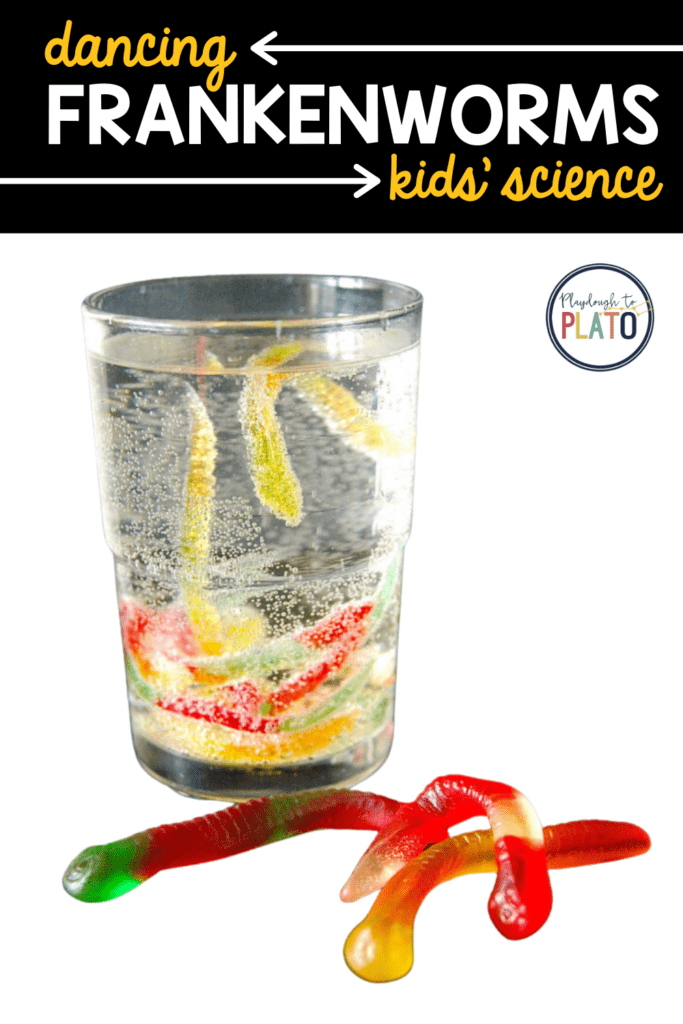
Getting Ready
First, I grabbed a bag of gummy worms and a few common household items:
- Gummy worms
- Baking soda
- Vinegar
- Cutting board
- Sharp knife
- 2 clear cups
Then, I cut the gummy worms in quarters. (I found it easier to do with a wet knife or one dusted with baking soda to prevent the worm from sticking to the knife.)
Next, I had my 4 year-old, A, measure out 3 tablespoons of baking soda and stir them into a glass filled with 1 cup of warm water. I handed her the pile of cut worms (we cut 3 worms in 12 pieces) and had her mix them into the baking soda and water concoction.
Now came the hard part. A had to wait a whole 15 minutes for the worms to soak in the baking soda mixture.
While we waited, we filled the second clear glass with vinegar.
As soon as the timer buzzed, A ran to the worms and very carefully fished them out with a fork.
We started by placing just a couple worms in the vinegar and they instantly started forming bubbles.
After a few seconds, the worms were covered in enough bubbles that they started rising from the bottom, writhing their way to the surface.
After several minutes, A wanted to add more – even though the first worms were still dancing about.
It turns out the extra worms just sat on the bottom, too weighted down by the other worms to rise.
So, in this kids’ science experiment, less is actually more, with about 4 worms being the best.
A, delighted she could make gummy worms come to life, couldn’t wait to show her little brother. He really thought they were alive and stared at them trying to figure out how we did it, then refusing to eat any of the remaining worms from the bag. 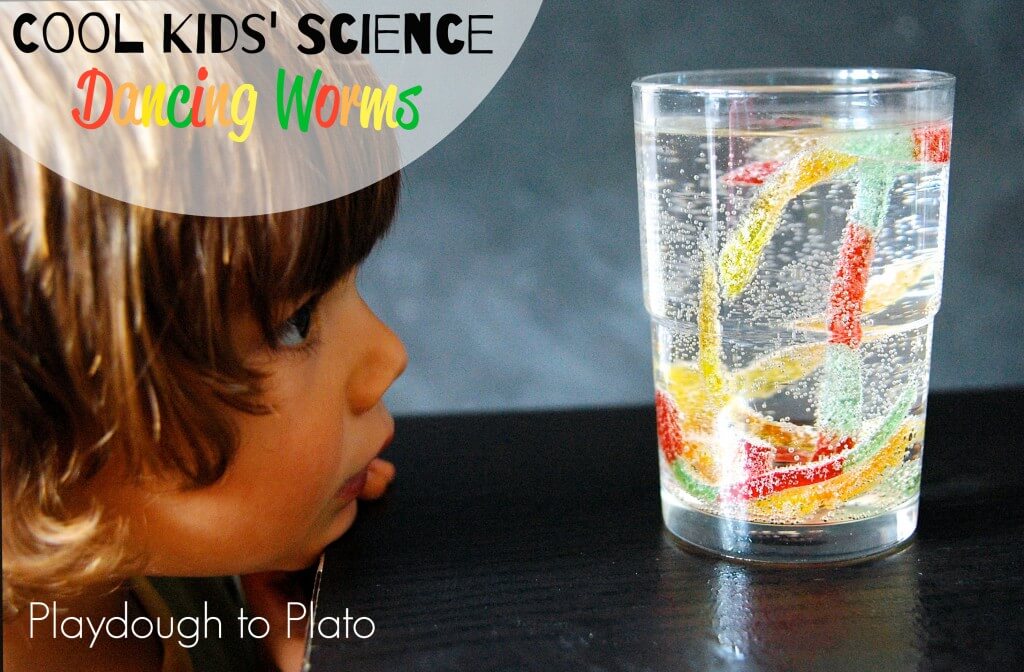 Quick and simple with lots of “oohs” and “aahs”, this kids’ science experiment is sweet in more ways than one!
Quick and simple with lots of “oohs” and “aahs”, this kids’ science experiment is sweet in more ways than one!
The Science Behind It
When you add the worms soaked in baking soda, the acetic acid in the vinegar reacts with the bicarbonate in the baking soda.
And when an acid and base react, carbon dioxide gas bubbles form.
These gas bubbles form on the gummy worm and as the gas bubbles rise to the surface, they pull the gummy worm up with them, making them wriggle and dance.
As the gas bubbles burst, the worm falls back down until enough bubbles form to pull it back up.
The bubbles will continue to form until all the baking soda on the worm is used up and the worm will stop wiggling.
More Simple Science Kids Will Love
Inspire kids to LOVE science with 30 more jaw dropping experiments they’ll beg to repeat!
Grab 30 easy-to-follow science experiments kids will beg to repeat (plus a no prep science journal to keep track of their results!) in our shop!



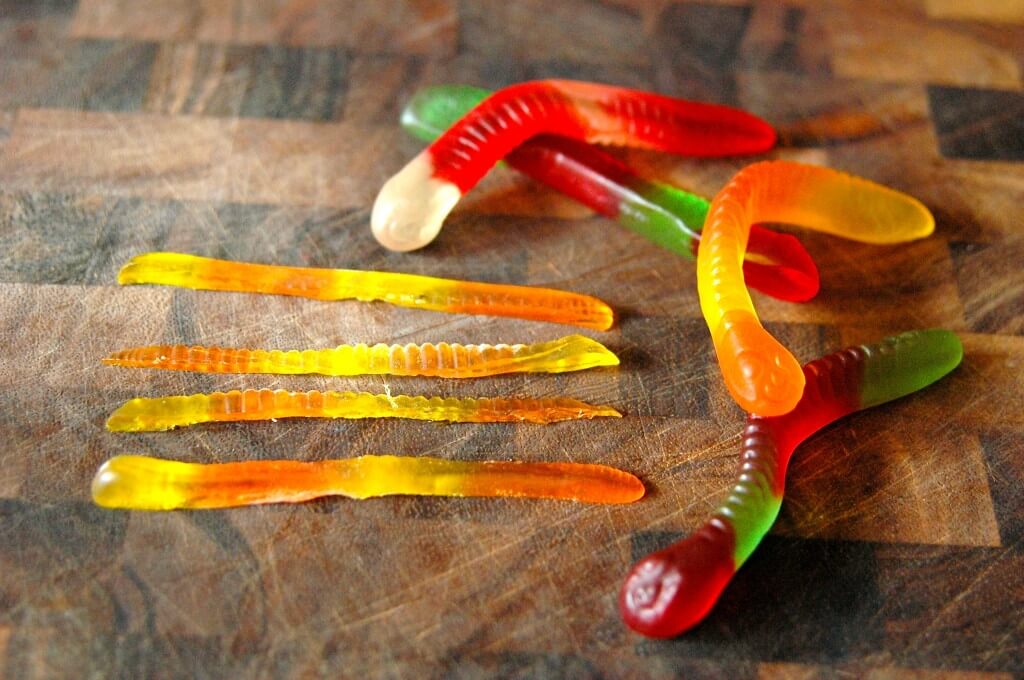
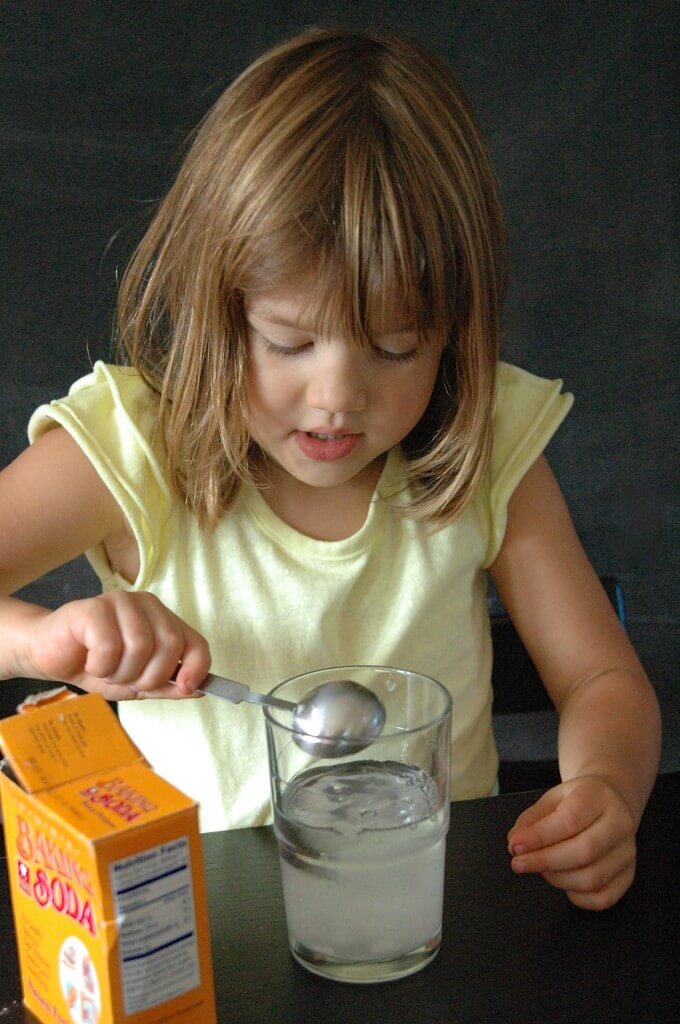
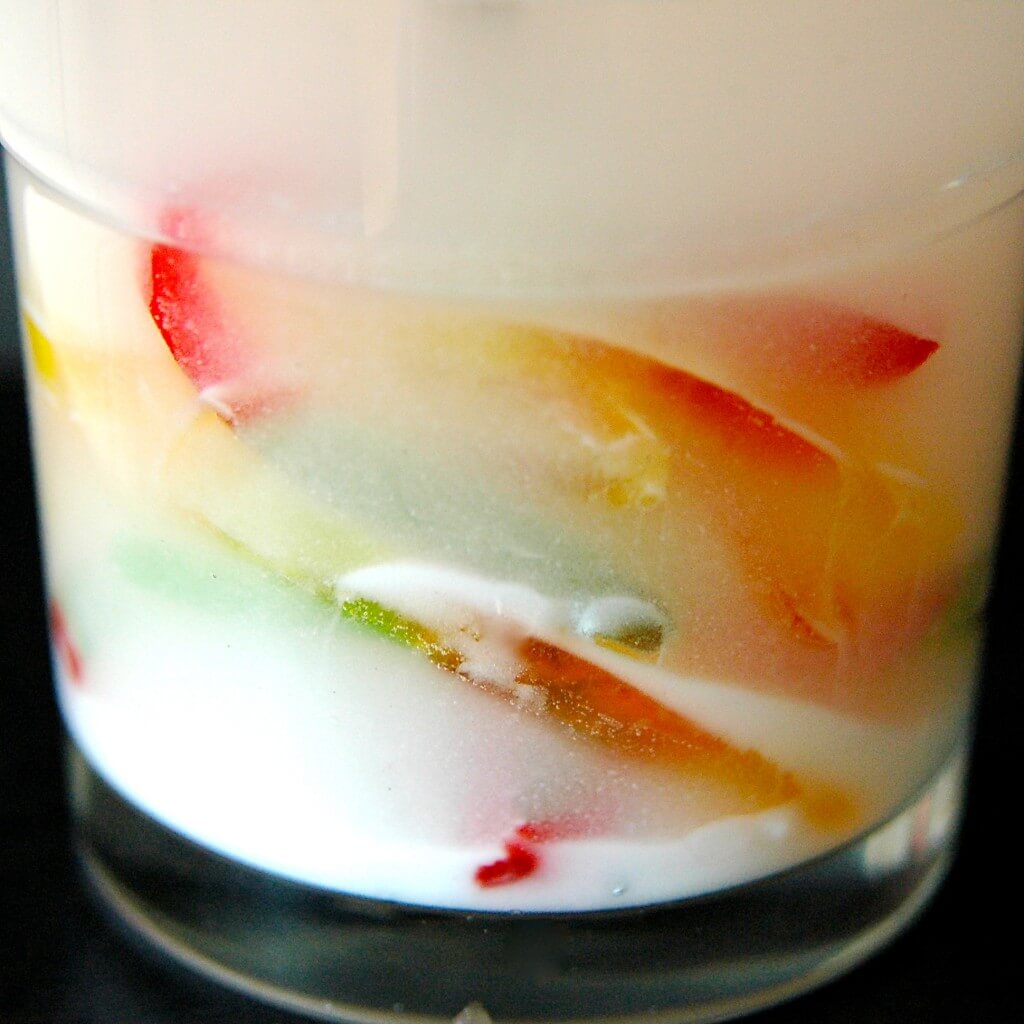
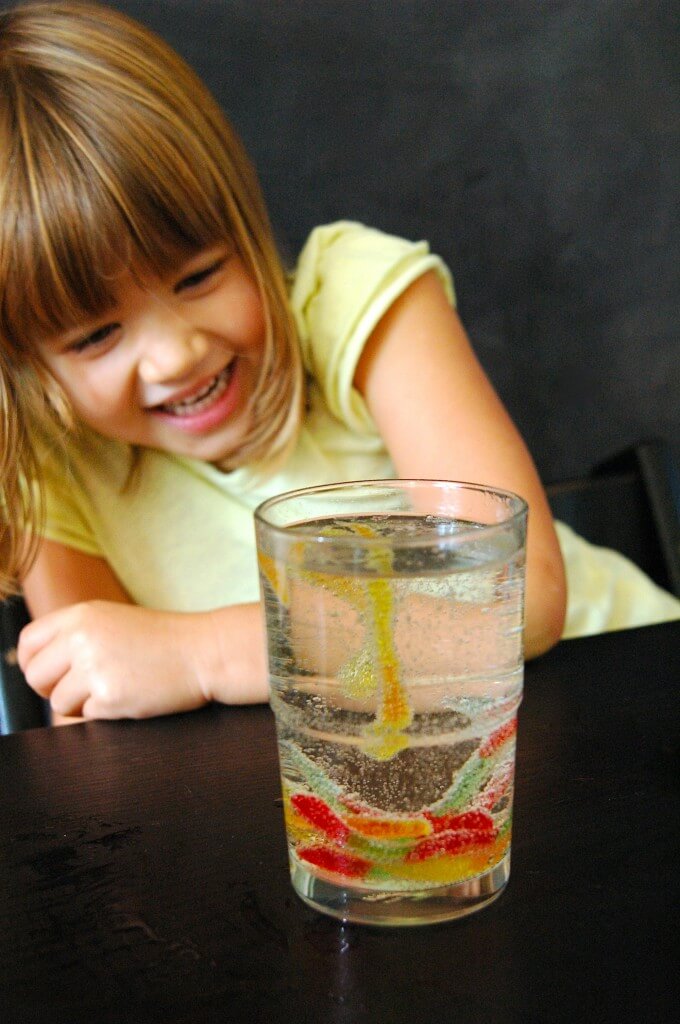
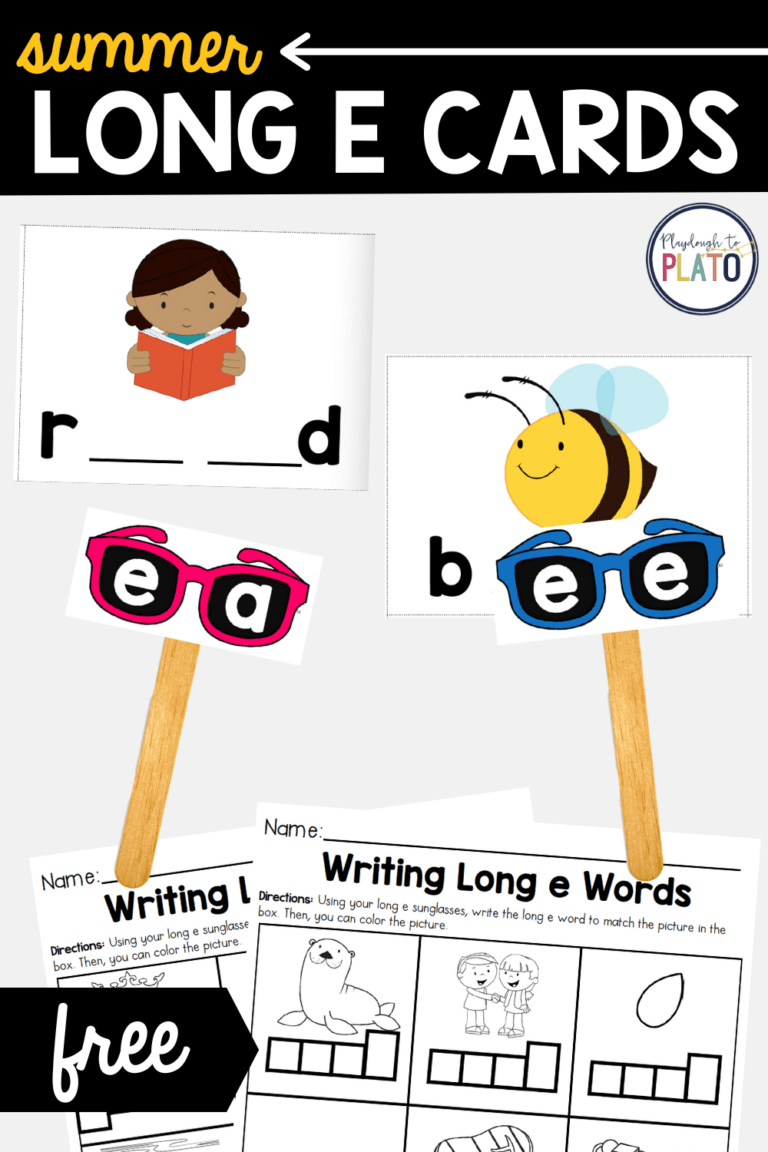

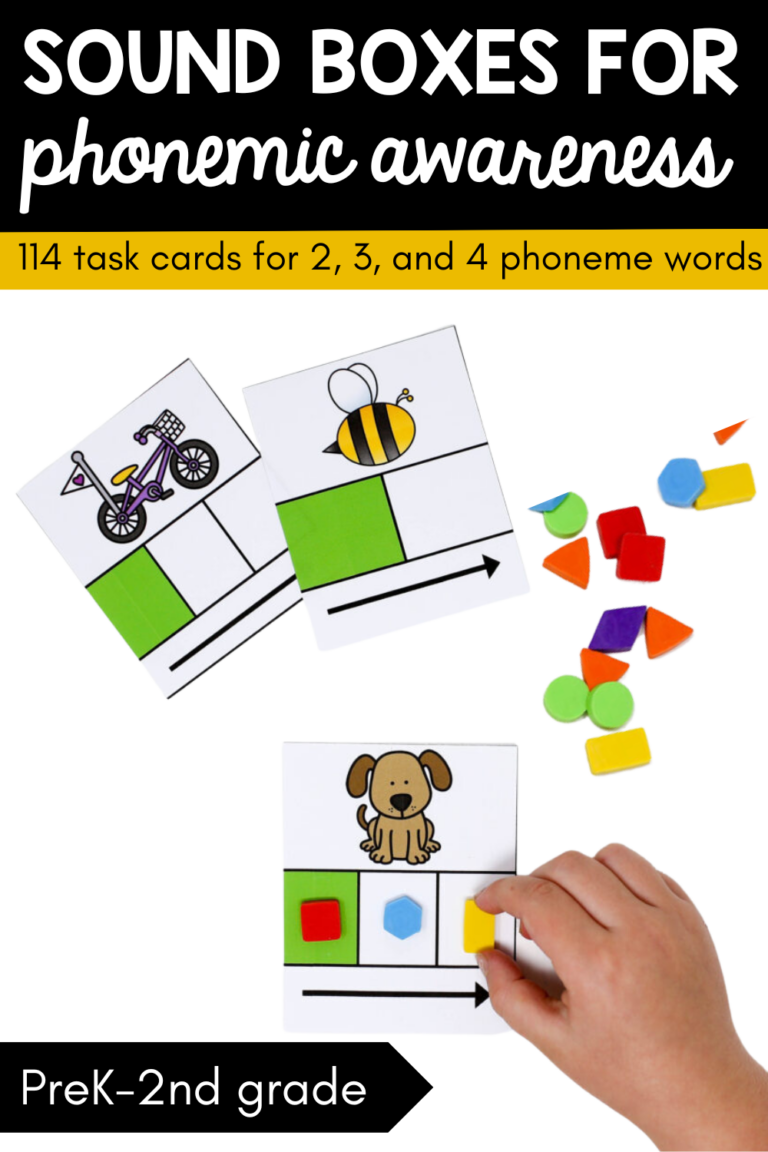
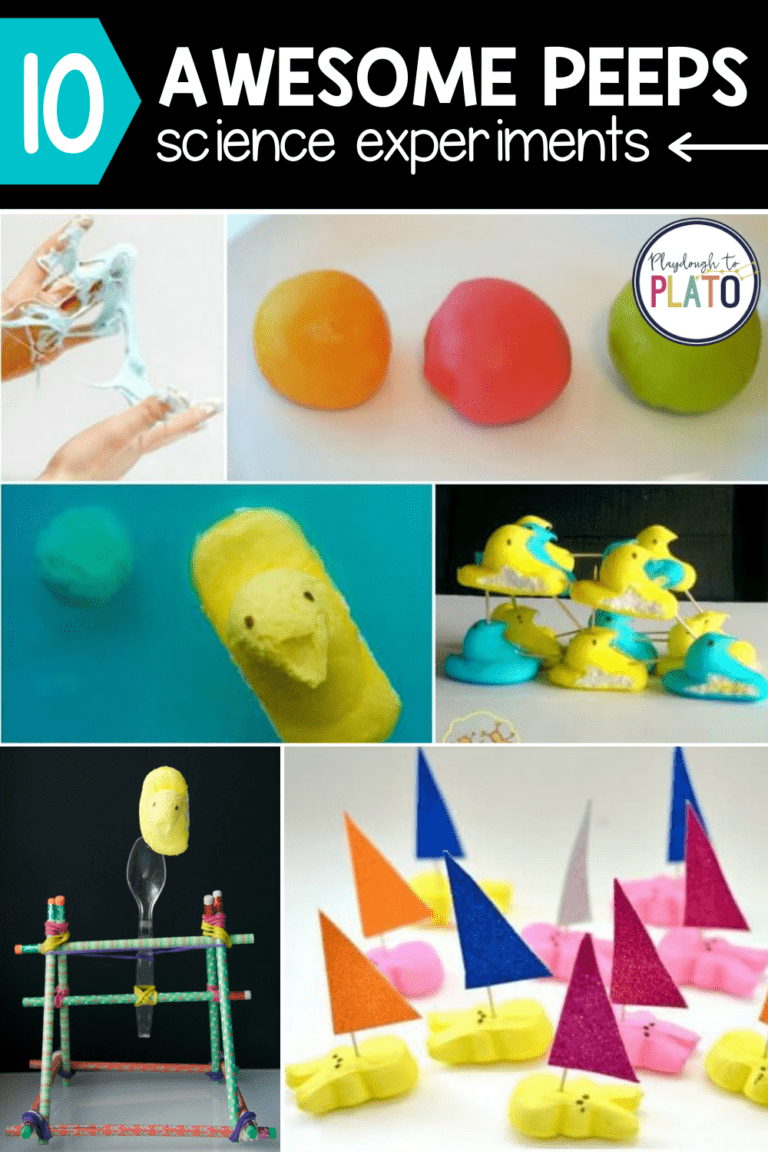
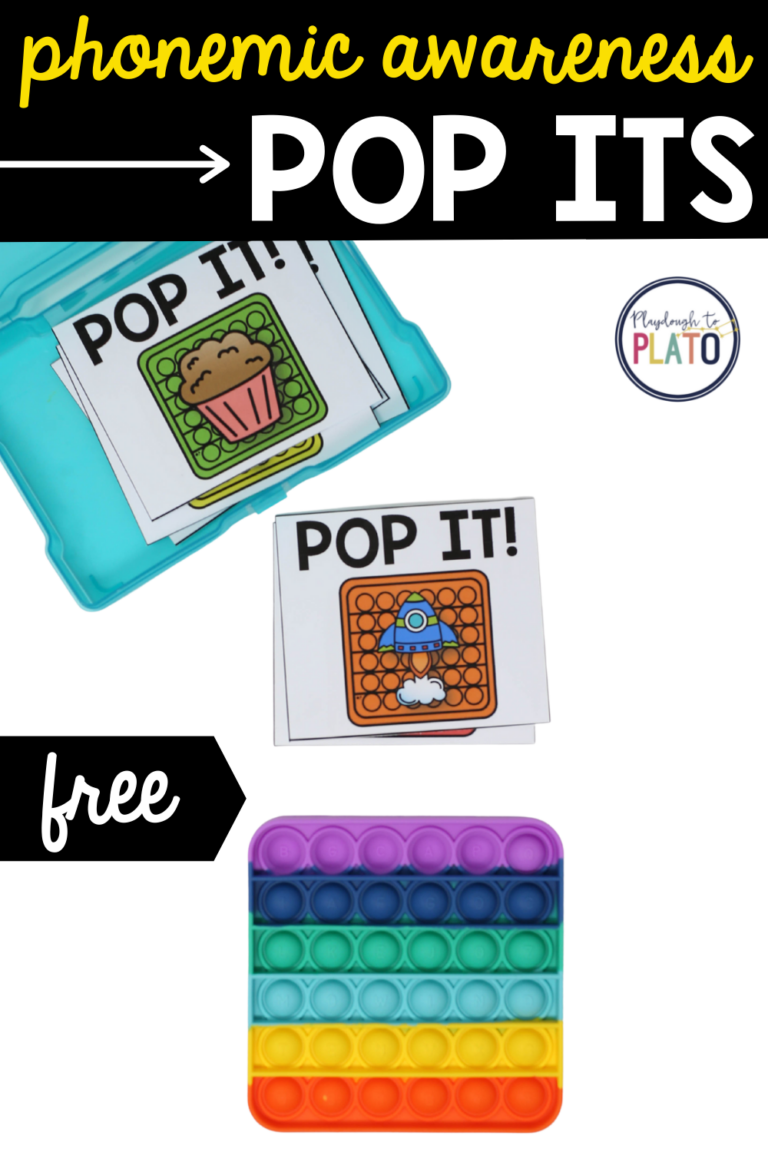
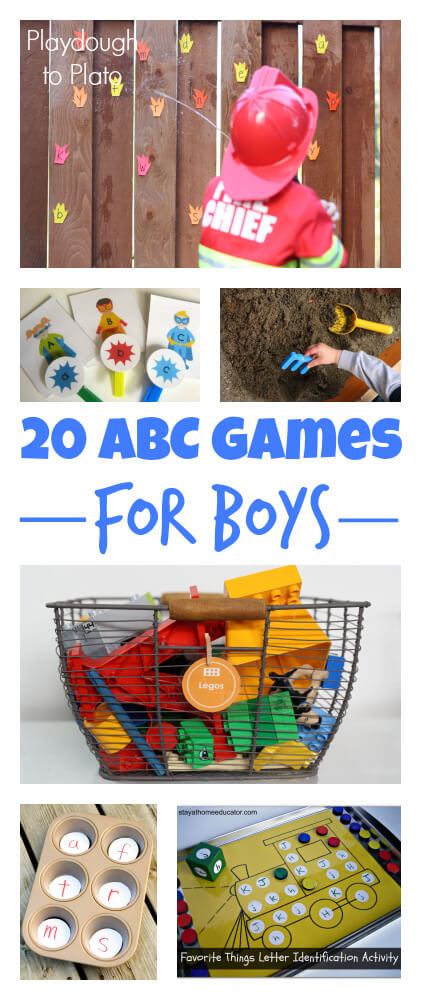
We tried this and it didn’t work at all.
Hi there!
I’m so sorry it didn’t work. Part of the secret is making sure the gummy worms are thin enough to be lifted.
Though we suggest cutting them into quarters, if you can cut them thinner, you may have a better chance of them working.
Warmly,
Sarah // Playdough to Plato Team
It hasn’t worked for me either. I’m trying again. Mine dissolved. 😩
Is there an non-food alternative to gummy worms that can be used? We are doing this in school and don’t want to have kids eating these in the classroom.
Hi!
You can do a similar experiment with popcorn kernels, but the amounts of baking soda and vinegar needed would likely vary.
Warmly,
Sarah // Playdough to Plato Team
I tried this twice now and can’t get it to work! The first time I followed the directions exactly. The second time I lengthened the soaking time to 20 minutes and used a little warmer water. Both times, nothing happened! Any suggestions? I planned on doing this next weekend for my son’s science birthday party.
Hi Jackie,
I’m so sorry that the experiment did not work for you. The ratio can be sensitive depending on the gummy worms.
You could try it with a higher concentration of baking soda, or you could also try it with sparkling water.
Hope that you have better luck next time.
Warmly,
Sarah // Playdough to Plato Team